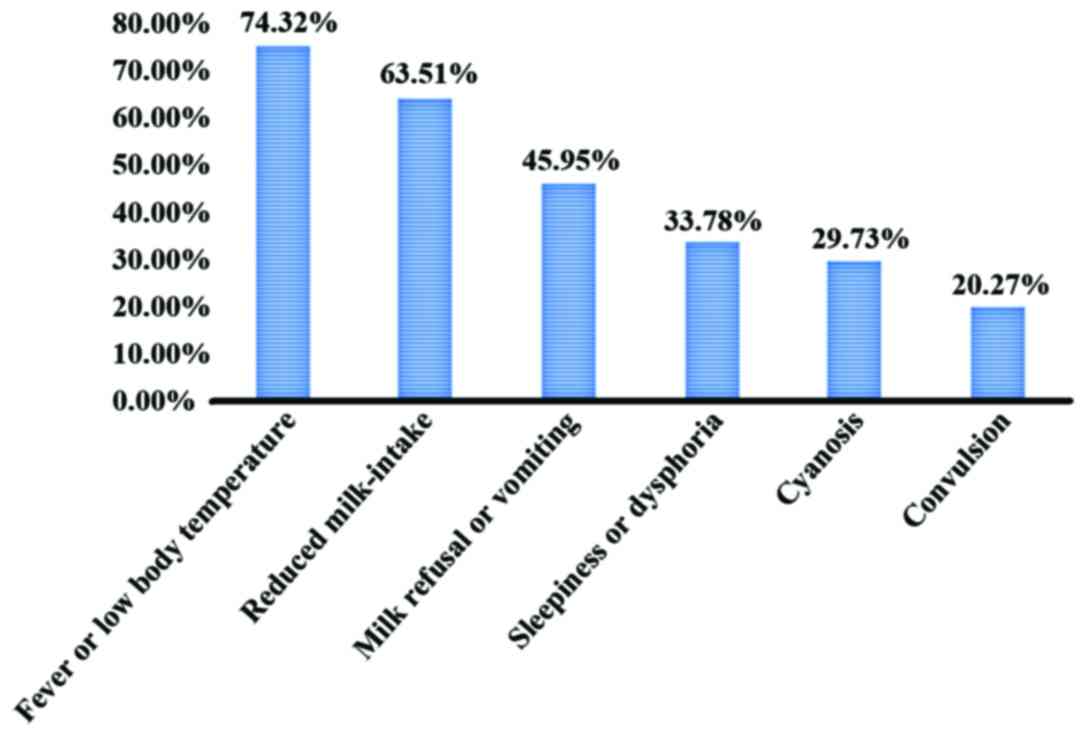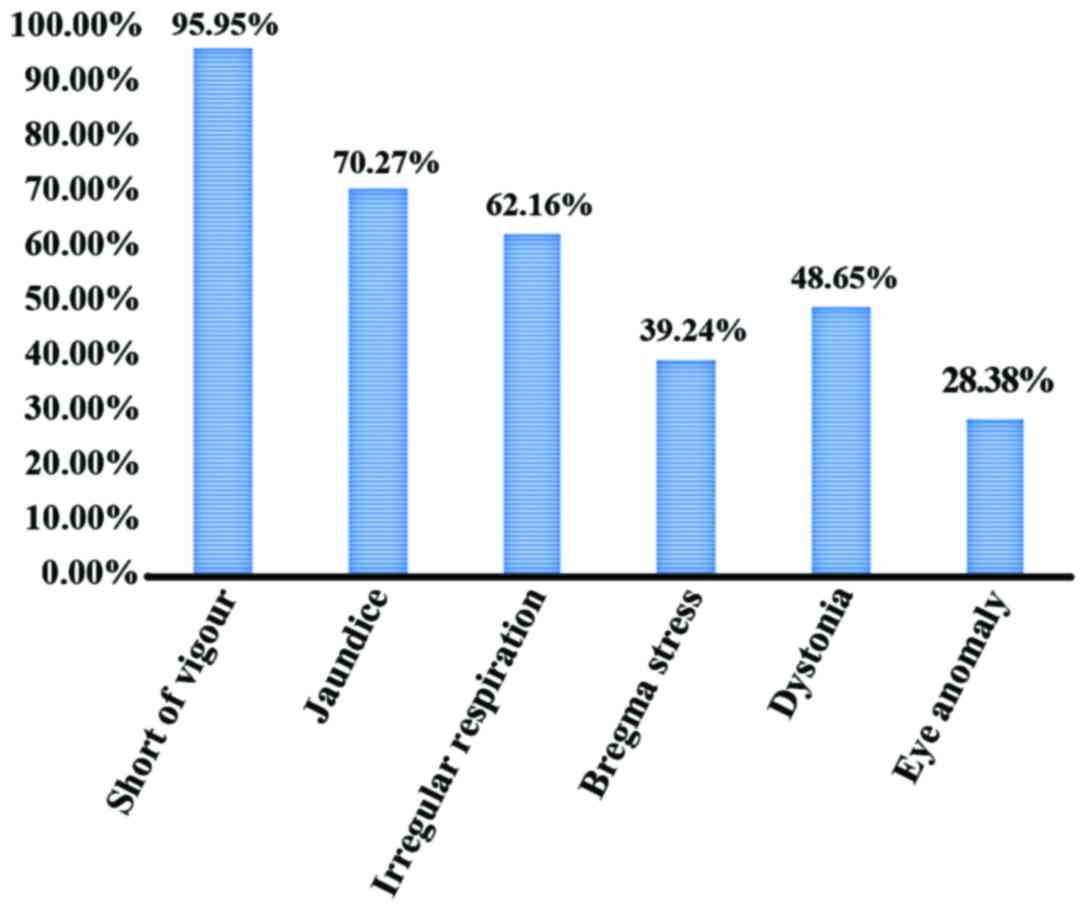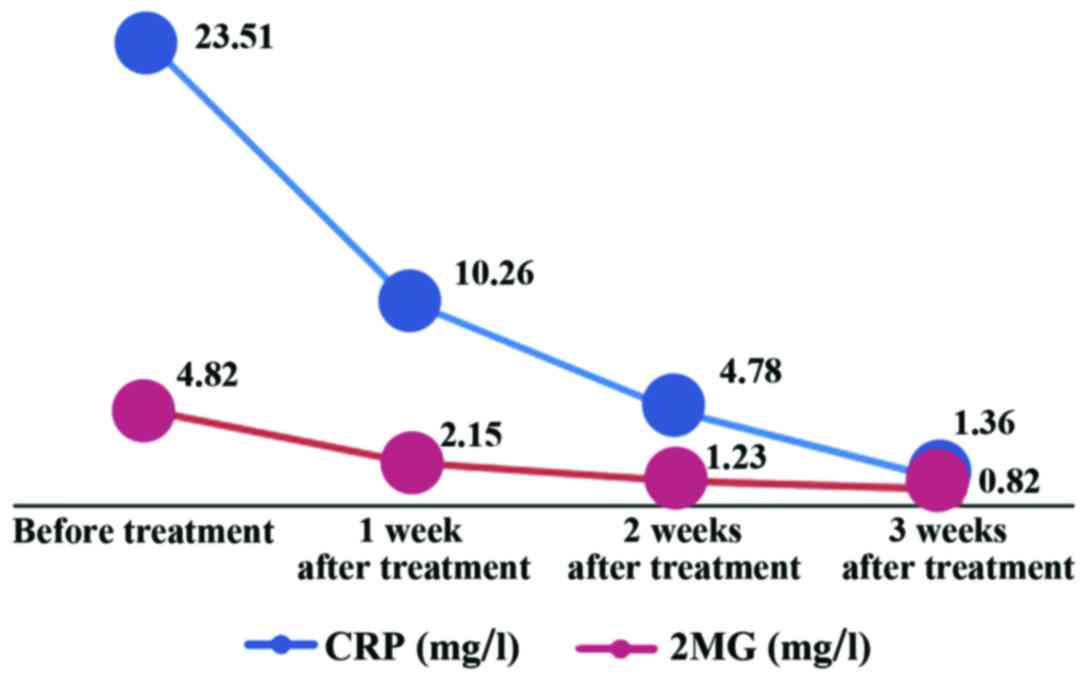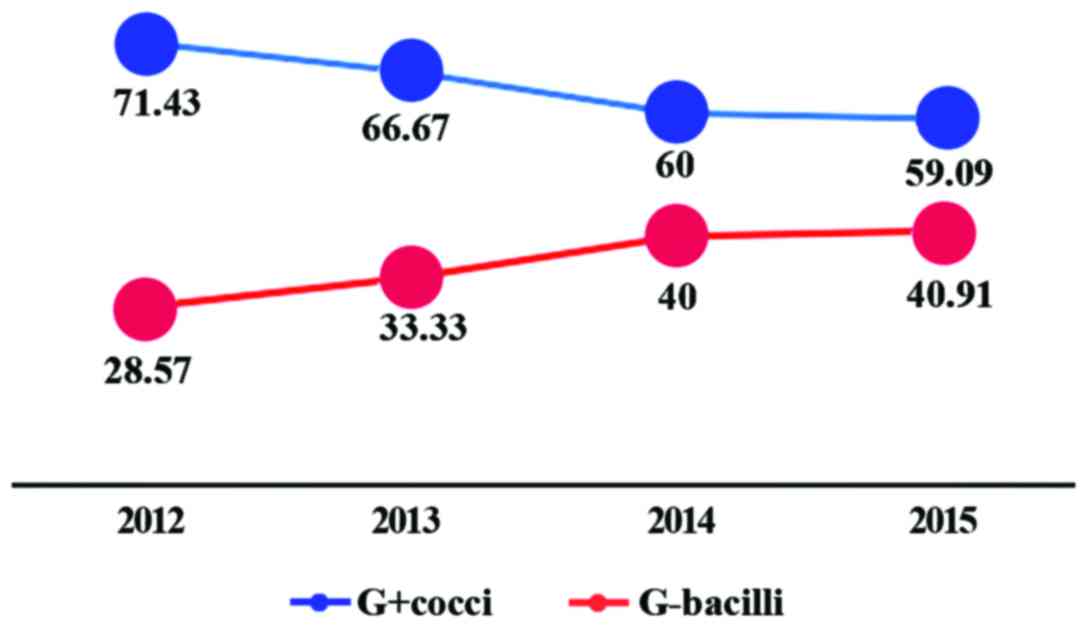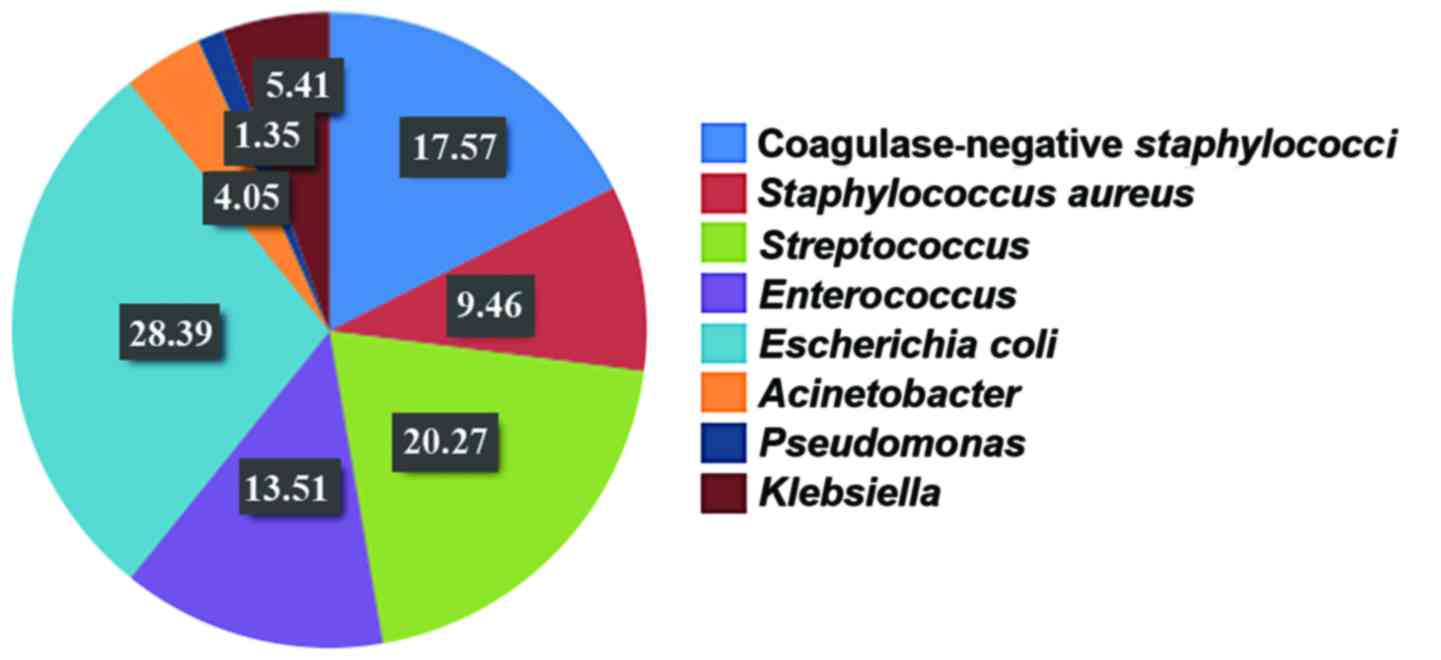|
1
|
Klingenberg C, Olomi R, Oneko M, Sam N and
Langeland N: Neonatal morbidity and mortality in a Tanzanian
tertiary care referral hospital. Ann Trop Paediatr. 23:293–299.
2003. View Article : Google Scholar : PubMed/NCBI
|
|
2
|
El Bashir H, Laundy M and Booy R:
Diagnosis and treatment of bacterial meningitis. Arch Dis Child.
88:615–620. 2003. View Article : Google Scholar : PubMed/NCBI
|
|
3
|
Chang CJ, Chang WN, Huang LT, Huang SC,
Chang YC, Hung PL, Tasi CY, Lu CH, Cheng BC, Lee PY, et al:
Neonatal bacterial meningitis in southern Taiwan. Pediatr Neurol.
29:288–294. 2003. View Article : Google Scholar : PubMed/NCBI
|
|
4
|
Lin PC, Chiu NC, Li WC, Chi H, Hsu CH,
Hung HY, Kao HA and Huang FY: Characteristics of nosocomial
bacterial meningitis in children. J Microbiol Immunol Infect.
37:35–38. 2004.PubMed/NCBI
|
|
5
|
Ruan L, Wu D, Li X, Huang Q, Lin L, Lin J,
Chen L, Xu P, Jin J, Yang N, et al: Analysis of microbial community
composition and diversity in postoperative intracranial infection
using high throughput sequencing. Mol Med Rep. 16:3938–3946. 2017.
View Article : Google Scholar : PubMed/NCBI
|
|
6
|
Rahman S: Lumbar puncture in neonates
under and over 72 hours of age. J Coll Physicians Surg Pak.
17:646–647. 2007.PubMed/NCBI
|
|
7
|
Hoque MM, Ahmed ASMNU, Chowdhury MAKA,
Darmstadt GL and Saha SK: Septicemic neonates without lumbar
puncture: What are we missing? J Trop Pediatr. 52:63–65. 2006.
View Article : Google Scholar : PubMed/NCBI
|
|
8
|
Kavuncuoğlu S, Gürsoy S, Türel Ö, Aldemir
EY and Hoşaf E: Neonatal bacterial meningitis in Turkey:
Epidemiology, risk factors, and prognosis. J Infect Dev Ctries.
7:73–81. 2013. View Article : Google Scholar : PubMed/NCBI
|
|
9
|
Gambino R: C-reactive protein -
undervalued, underutilized. Clin Chem. 43:2017–2018.
1997.PubMed/NCBI
|
|
10
|
Smith RP and Lipworth BJ: C-reactive
protein in simple community-acquired pneumonia. Chest.
107:1028–1031. 1995. View Article : Google Scholar : PubMed/NCBI
|
|
11
|
Enguix A, Rey C, Concha A, Medina A, Coto
D and Diéguez MA: Comparison of procalcitonin with C-reactive
protein and serum amyloid for the early diagnosis of bacterial
sepsis in critically ill neonates and children. Intensive Care Med.
27:211–215. 2001. View Article : Google Scholar : PubMed/NCBI
|
|
12
|
Takahashi S, Oki J, Miyamoto A, Moriyama
T, Asano A, Inyaku F and Okuno A: Beta-2-microglobulin and ferritin
in cerebrospinal fluid for evaluation of patients with meningitis
of different etiologies. Brain Dev. 21:192–199. 1999. View Article : Google Scholar : PubMed/NCBI
|
|
13
|
Murawska E, Szychowska Z and Jarno A: Beta
2 microglobulin in children with neuroinfections. Przegl Epidemiol.
51:457–463. 1997.(In Polish). PubMed/NCBI
|
|
14
|
Sáez-Llorens X and McCracken GH Jr:
Bacterial meningitis in children. Lancet. 361:2139–2148. 2003.
View Article : Google Scholar : PubMed/NCBI
|
|
15
|
Lin MC, Chi H, Chiu NC, Huang FY and Ho
CS: Factors for poor prognosis of neonatal bacterial meningitis in
a medical center in Northern Taiwan. J Microbiol Immunol Infect.
45:442–447. 2012. View Article : Google Scholar : PubMed/NCBI
|
|
16
|
Cho HK, Lee H, Kang JH, Kim KN, Kim DS,
Kim YK, Kim JS, Kim JH, Kim CH, Kim HM, et al: The causative
organisms of bacterial meningitis in Korean children in 1996–2005.
J Korean Med Sci. 25:895–899. 2010. View Article : Google Scholar : PubMed/NCBI
|
|
17
|
Furyk JS, Swann O and Molyneux E:
Systematic review: Neonatal meningitis in the developing world.
Trop Med Int Health. 16:672–679. 2011. View Article : Google Scholar : PubMed/NCBI
|
|
18
|
Gaschignard J, Levy C, Romain O, Cohen R,
Bingen E, Aujard Y and Boileau P: Neonatal bacterial meningitis:
444 cases in 7 years. Pediatr Infect Dis J. 30:212–217. 2011.
View Article : Google Scholar : PubMed/NCBI
|
|
19
|
Levent F, Baker CJ, Rench MA and Edwards
MS: Early outcomes of group B streptococcal meningitis in the 21st
century. Pediatr Infect Dis J. 29:1009–1012. 2010.PubMed/NCBI
|
|
20
|
Barichello T, Fagundes GD, Generoso JS,
Elias SG, Simões LR and Teixeira AL: Pathophysiology of neonatal
acute bacterial meningitis. J Med Microbiol. 62:1781–1789. 2013.
View Article : Google Scholar : PubMed/NCBI
|
|
21
|
Verani JR, McGee L and Schrag SJ: Division
of Bacterial Diseases, National Center for Immunization and
Respiratory Diseases, Centers for Disease Control and Prevention
(CDC): Prevention of perinatal group B streptococcal disease -
revised guidelines from CDC, 2010. MMWR Recomm Rep. 59:1–36.
2010.PubMed/NCBI
|















